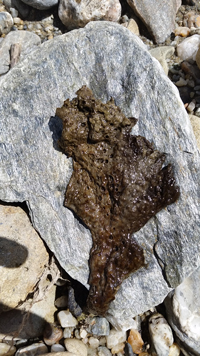Cyanobacteria occurs naturally in waterways, but can become a problem in summer when the algae can form thick mats on river beds, especially during low flows.
The presence of algae was confirmed in the Cardrona and Manuherikia last summer but would have also been present in other streams and waterways in the region.
Otago Regional Council director of engineering, hazards, and science Dr Gavin Palmer said while the council is not able to monitor throughout the region, It is important that people using waterways are aware of the risks associated with toxic algae and are alert to its possible presence wherever they are in Otago.
Some cyanobacteria produce toxins that are a possible health risk to humans and animals if consumed, and they can also cause irritation to the skin and eyes. There have been cases in New Zealand of dog deaths associated with toxic algae where dogs have eaten the mats formed by the cyanobacteria species Phormidium.
Phormidium mats produce a deep earthly odour attractive to dogs.
Dr Palmer said the risk to dogs is greatest when Phormidium mats become detached from the river bed and collect at a river’s edge where dogs can reach them easily.
“If the bed of a river is covered in thick dark brown or black mats that have a velvety texture and a musty smell, it is wise to be cautious and avoid that river site,” he said.
Pets should be taken to a vet immediately if they show signs of illness after coming into contact with algal mats. The greatest risk is to dogs, which are more likely to consume the mats in the water.
“The most common signs that a dog might have consumed toxic algal material are lethargy, muscle tremors, fast breathing, salivation, twitching, paralysis and uncontrolled shaking, convulsions, or frothing at the mouth soon after being in the water,” Dr Palmer said.
Anyone concerned their pet may have consumed toxic algae should contact their vet immediately, he said.

For more information please contact
Dr Gavin Palmer
Director engineering, hazards, and science
ORC
Ph 0800 474082 or 0274 933960
ORC Communications contact
Mark Peart
Team Leader Communications – Channels
Ph 0800 474082 or 027 5312620
Email: mark.peart@orc.govt.nz
